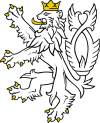Výsledky hledání "net biome production" v anglicko-českém slovníku:
| Slovo | Překlad | Výslovnost | Definice | Viz také |
|---|---|---|---|---|
| net biome production | čistá produkce biomu | [net baiәum prәdәkšәn] | Net gain or loss of carbon from a region. NBP is equal to the Net Ecosystem Production minus the carbon lost due to a disturbance, e.g. a forest fire or a forest harvest. | |
| biome | biom | [bajəum] | Biomes organize the biological communities of the earth based on similarities in the dominant vegetation, climate, geographic location, and other characteristics. Aspects of the physical environment such as precipitation, temperature, and water depth, hav | |
| marine biome | mořský biom | [mәri:n baiәum] | Marine biomes are generally distinguished by the depth of the water and whether there is a substrate on which organisms can attach. Important marine biomes include oceans, coral reefs, and estuaries. The ocean biome, the largest of all of the earth's biom | |
| terrestrial biome | suchozemský biom, terestrický biom | [tәrestri:әl baiәum] | Terrestrial biomes characterize ecosystems on land, and are usually identified by the growth form of the dominant vegetation, climate, and/or where they are located on the earth. The major terrestrial biomes include the tundra biome, the forest biome, the | |
| tundra biome | tundra | [tandrә baiәum] | The tundra biome is characterized by the absence of trees and the presence of low-lying shrubs, mosses, and lichens. Lack of height allows the vegetation to be protected by the insolating properties of snow during the winter season. Perhaps the most chara | |
| forest biome | biom lesů | [forist baiәum] | Forest biomes, biological communities that are dominated by trees and other woody vegetation, can be classified according to numerous characteristics, with seasonality being the most widely used. Distinct forest types also occur within each of these broad | |
| freshwater biome | sladkovodní biom | [frešwo:tә baiәum] | Freshwater biomes are regions with low salt concentration and are generally distinguished by characteristics such as water depth and whether the water is moving or standing. Major freshwater biomes include ponds and lakes, streams and rivers, and wetlands | |
| oil production | těžba ropy, produkce ropy | [oil prədakšən] | ||
| production (1) | produkce | [prədakšən] | In ecology, the accumulation of organic matter by organisms. | |
| production (2) | výroba, produkce, těžba, dobývání, výpěstky (pl., agr.), výkon | [prədakšən] | ||
| seed production | semenářství, produkce semen | [si:d prədakšən] | (forest) seed management | |
| sludge production | produkce kalu | [sladž prədakšən] | The amount of sludge produced from sewage in terms of cubic metres per head per annum, kilogrammes of dry solids per head per day, or kilogrammes of volatile matter per head per day. | |
| mass production | masová výroba, velkovýroba, hromadná výroba | [mæs prədakšən] | ||
| means of production | výrobní prostředky (pl.) | [mi:nz əv prədakšən] | ||
| net ecosystem production | čistá produkce ekosystému | [net i:kəusistəm prədakšən] | The gain or loss of organic matter in an ecosystem during a certain time period. Also net plant production less the respiration of herbivores, carnivores, and decomposers. | |
| net primary production | čistá primární produkce | [net praiməri prədakšən] | Net primary productivity (NPP) is defined as the net flux of carbon from the atmosphere into green plants per unit time. NPP refers to a rate process, i.e., the amount of vegetable matter produced (net primary production) per day, week, or year. However, | NPP |
| aboveground production | nadzemní produktivita, nadzemní produkce | [əbav graund prədakšən] | ||
| below ground production | podzemní produkce, podzemní produktivita | [biləu graund prədakšən] | ||
| wasteless production | bezodpadová výroba, bezodpadová technologie | [weistlәs prodakšən] | wasteless operation | |
| plant production | rostlinná výroba | [pla:nt prәdәkšәn] | crop production | |
| cleaner production | čistší produkce | [kli:nə prədakšən] | ||
| primary production | primární produkce | [praiməri prədakšən] | 1. The conversion of solar energy into chemical energy by photosynthesis. 2. The amount of organic matter, expressed as dry mass, produced per unit area during the whole growing period. 3. The amount of organic matter present in a unit area per specified | primary productivity |
| crop production | rostlinná výroba | [krop prədakšən] | plant production | |
| forage production | pícninářství, pěstování píce | [foridž prodәkšәn] | fodder cropping, forage growing | |
| production costs (pl.) | výrobní náklady (pl.) | [prədakšən kosts] | ||
| production patterns (pl.) | vzorce výroby (pl.) | [prәdakšәn pætәnz] | ||
| gross production | hrubá produkce | [grәus prәdәkšәn] | The total amount of organic material produced by plant photosynthesis in a given time period. | gross productivity |
| livestock production | živočišná výroba, chov hospodářských zvířat | [laivstok prədakšən] | ||
| small-scale production | malovýroba, výroba v malém měřítku | [smo:l skeild prәdakšәn] | ||
| specific production emission | měrná výrobní emise | [spesifik prәdakšәn әmišәn] | Ratio of the mass of a pollutant released into the ambient air to the relative quantity established by measurement and calculation at an individual facility or set of facilities at a source. | |
| sustainable consumption and production | (trvale) udržitelná spotřeba a výroba | [sasteinəbəl kәnsampšən ænd prədakšən] | ||
| non-timber forest production | produkce lesa mimo dřevo | [non timbə forist prədakšən] | NTFP | |
| production possibilities curve | křivka produkčních možností | [prәdәkšәn posәbilәti:z] | ||
| large-scale production | velkovýroba | [la:dž skeil prədakšən] | ||
| reserve-to-production rate | životnost neobnovitelného zdroje | [rizə:v tu prədakšən reit] | The number of years that reserves of a particular non-renewable mineral will last at the current annual production rates. |

 Resort životního prostředí
Resort životního prostředí 